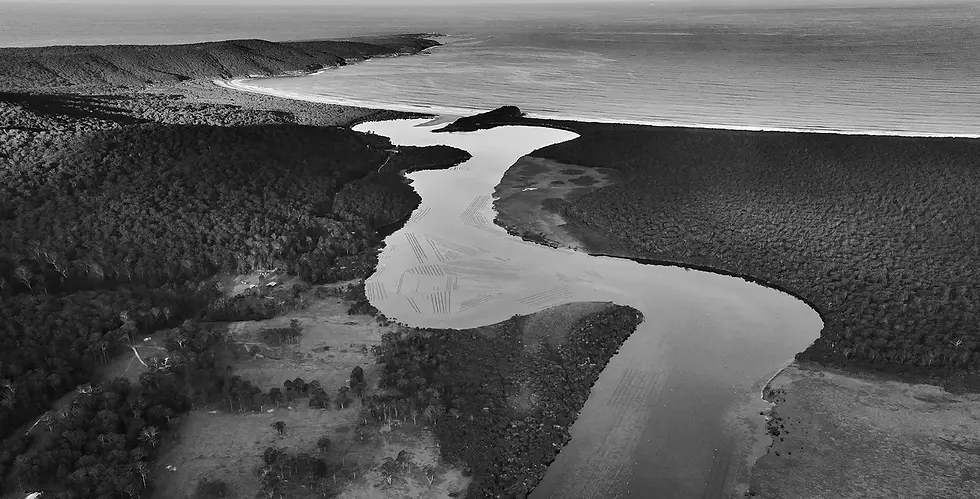
wonboyn River, NSW

Estuary Type:
Transitional estuary between terrestrial and marine environments
Water Source:
Wonboyn River
Estuary Salinity:
25-32 parts per thousand
Surrounding Land:
State forest, nature reserves, and indigenous conservation sites
Peak Season:
Late summer to early winter
Farming Techniques:
Trays and Floating Bags
Wonboyn Lake serves as the southern entrance to Australia's renowned Oyster Coast, distinguished by its cooler average water temperatures compared to other estuaries in New South Wales (NSW).
This vast and secluded estuary system is situated roughly 35km south of Eden, a historic whaling hub at Twofold Bay, near the NSW/Victorian border in Bidwell Country. Encircled by the Ben Boyd National Park to the north, the area is bordered by the Nadgee Wilderness Zone and extensive state forests. The Wonboyn River enriches the estuary with nutrients from its passage through the Ben Boyd National Park.
The lake is entirely tidal, merging with the ocean waves through a slender passage at Disaster Bay. The oysters harvested here, from the pristine waters amidst this untouched natural area, are notably creamy and have a fruity taste.
Wonboyn stands out for having the highest freshwater influx and, as a result, the least saline levels of any coastal estuary. Thus, oysters from Wonboyn are known for their subtle briny taste. The Wonboyn Rock Oyster is particularly creamy, especially from the late summer to early winter period. The lake's restricted opening to the Pacific Ocean and minimal oceanic tidal interchange keep the salinity levels consistently low and maintain high organic nutrient levels from the Wonboyn River, enhancing the oysters' gonad condition and giving them a moderate sweetness.
The influx of freshwater carries nutrients from the land, producing oysters that are full-bodied, creamy, with noticeable vegetal tones and a moderate mineral content. The estuary's flourishing micro-algae community, thriving in nutrient-rich muddy and silty seabeds, contributes to an oyster variety that delivers a strong umami flavour.
Flavour Profile
Least briny of all estuaries; plump, creamy, more vegetal notes.

